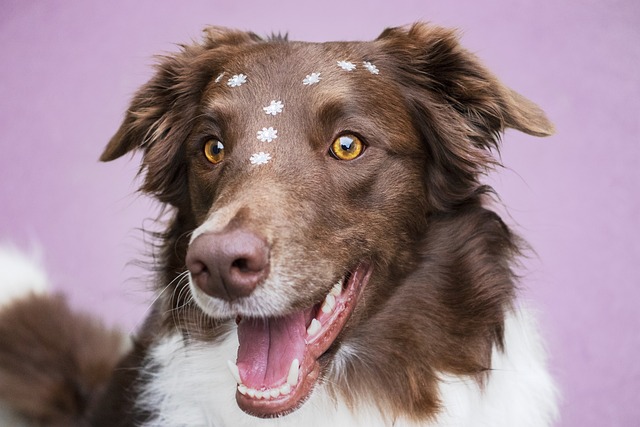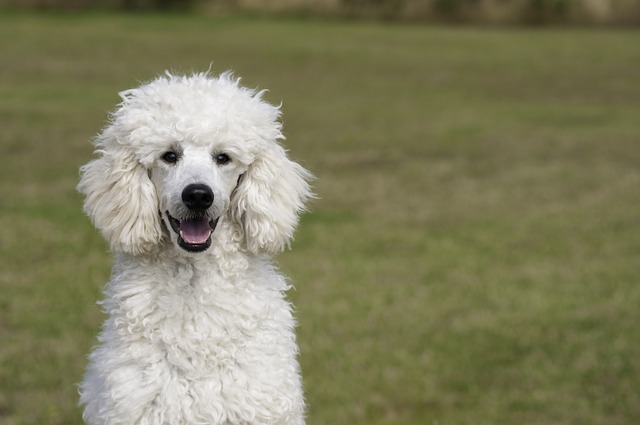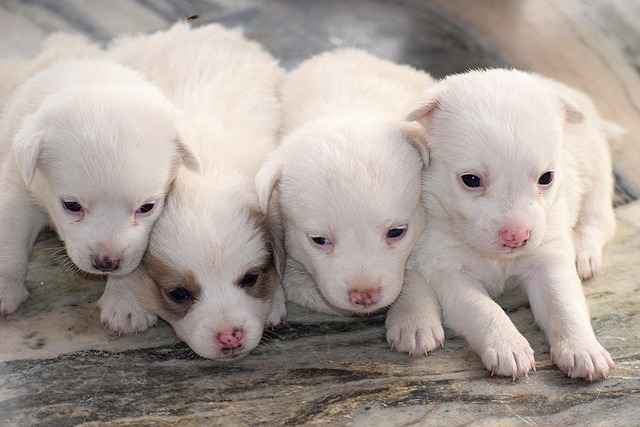
Should I give my dog a dental treat every day
If you’ve ever caught a whiff of your dog’s breath during a snuggle session and winced, you’ve probably considered dental treats as a quick fix. New dog owners
When your dog suddenly becomes restless, paces frantically, and seems unable to get comfortable, these might be the first terrifying signs of Gastric Dilatation-Volvulus—commonly known as GDV or bloat. After witnessing countless emergency cases over the years, I can tell you that understanding this condition could literally save your dog's life.
GDV occurs when a dog's stomach fills with gas and twists on itself, creating a deadly trap. The twisted stomach blocks blood flow and prevents gas from escaping, leading to rapid deterioration. Large, deep-chested breeds like Great Danes, German Shepherds, and Standard Poodles face the highest risk, though any dog can develop this condition. The symptoms often start subtly—restlessness, excessive drooling, or attempts to vomit without producing anything. Within hours, your dog may collapse as their organs begin shutting down from lack of blood circulation.
What makes GDV particularly devastating is its rapid progression. Unlike many other health emergencies where you might have days to seek treatment, GDV operates on a timeline measured in hours. The condition typically develops in two stages: first, the stomach dilates with gas, then it rotates, creating the life-threatening volvulus. This rotation cuts off blood supply to vital organs and can cause the stomach wall to die from lack of oxygen.
The survival statistics for GDV reveal a stark truth about timing. Dogs receiving treatment within the first few hours of symptom onset have significantly better outcomes than those whose treatment is delayed. Early intervention for dog GDV becomes the single most critical factor determining whether your pet survives this medical crisis.
When you rush your dog to the emergency clinic suspecting GDV, veterinarians move with practiced urgency. They'll first stabilize your dog with IV fluids and pain management before confirming the diagnosis through X-rays. The twisted stomach creates a distinctive "double bubble" appearance on radiographs that experienced veterinarians can identify immediately. Some cases require additional imaging, but the priority remains getting your dog into surgery as quickly as possible.
The surgical procedure, called a gastropexy, involves untwisting the stomach and permanently attaching it to the abdominal wall to prevent future rotation. During surgery, the veterinarian also removes any dead stomach tissue and addresses complications like irregular heart rhythms that commonly accompany GDV. The entire process typically takes two to three hours, depending on the severity of the condition and any complications discovered during the procedure.
However, surviving the surgery represents only the beginning of your dog's recovery journey. Post-operative care for GDV in dogs requires meticulous attention to detail and strict adherence to veterinary protocols. The first 24 to 48 hours after surgery are particularly critical, as your dog's body works to restore normal function while healing from the trauma.
Pain management forms the cornerstone of effective post-operative care. Your veterinarian will prescribe specific medications and dosing schedules that you must follow precisely. These medications not only keep your dog comfortable but also help prevent stress-related complications that could jeopardize recovery. Never adjust dosages or skip medications without consulting your veterinary team first.
Dietary management during recovery requires careful planning and patience. Most dogs return home on a bland, easily digestible diet served in small, frequent meals. This approach reduces stress on the healing stomach while ensuring adequate nutrition. Some dogs may initially refuse food due to nausea or discomfort, but this usually resolves within a few days. Your veterinarian might recommend specific prescription diets or supplements to support healing.
Activity restrictions play an equally important role in successful recovery. While your dog may feel energetic after the initial healing period, premature return to normal activity can compromise the surgical repair. Most veterinarians recommend restricted exercise for at least two weeks, gradually increasing activity based on healing progress and follow-up examinations.
Regular monitoring at home becomes your responsibility as a pet owner. Watch for signs of complications like excessive lethargy, vomiting, loss of appetite, or changes in the surgical site. These symptoms warrant immediate veterinary attention, as post-operative complications can develop rapidly even days after surgery.
The dog GDV survival rate varies significantly based on multiple factors, but the statistics might surprise you. Contrary to popular belief that GDV carries a uniformly poor prognosis, dogs receiving prompt treatment and appropriate post-operative care have survival rates ranging from 70% to 90%. This stark contrast challenges the common perception that a GDV diagnosis equals a death sentence.
Dogs treated within the first few hours of symptom onset consistently show better outcomes than those whose treatment is delayed. The survival rate drops dramatically when treatment is postponed beyond six hours, emphasizing why veterinarians classify GDV as a true medical emergency. Additionally, dogs whose surgery includes prophylactic gastropexy—permanently attaching the stomach to prevent future twisting—have virtually eliminated risk of recurrence.
Age and overall health status also influence survival rates. Younger, healthier dogs typically recover more successfully than older dogs or those with underlying health conditions. However, even senior dogs can achieve good outcomes with appropriate care, so age alone shouldn't determine treatment decisions.
The presence of complications during surgery, such as dead stomach tissue requiring removal or severe heart rhythm abnormalities, can affect survival rates. However, modern veterinary techniques and intensive care protocols have dramatically improved outcomes even for complex cases. Many dogs that would have been considered hopeless just a decade ago now survive and thrive with aggressive treatment.
Understanding these statistics empowers you to make informed decisions about your dog's care. While GDV remains serious, the improving GDV survival outcomes reflect advances in veterinary medicine and the importance of educated pet owners who recognize symptoms early and seek immediate treatment.
As a pet owner, you hold significant power to influence your dog's survival chances. Learning to recognize the early signs of GDV could save precious time that translates directly into better outcomes. The classic symptoms—restlessness, unproductive retching, excessive drooling, and abdominal distension—often appear hours before the condition becomes life-threatening.
Trust your instincts when something seems wrong with your dog. Many pet owners report feeling that something was "off" about their dog's behavior before obvious symptoms appeared. Don't hesitate to contact your veterinarian or emergency clinic if you suspect GDV, even if you're not entirely certain. Emergency veterinarians would rather evaluate a false alarm than treat a case where precious time was lost to hesitation.
Establish a relationship with a 24-hour emergency veterinary clinic before you need one. Know their location, contact information, and typical wait times. During a GDV emergency, every minute counts, and fumbling with phone books or internet searches wastes valuable time. Keep this information easily accessible on your phone and share it with family members who might need to make emergency decisions.
Follow post-operative instructions precisely, even when your dog seems to be recovering well. The most successful recoveries happen when pet owners maintain strict adherence to medication schedules, dietary restrictions, and activity limitations. Recovery might seem slow, but patience during this critical period often determines long-term success.
Consider discussing prophylactic gastropexy with your veterinarian if you own a high-risk breed. This preventive surgery can be performed during routine procedures like spaying or neutering and essentially eliminates the risk of GDV. While not every dog needs this procedure, it's worth discussing with your veterinarian based on your dog's breed, age, and risk factors.
GDV doesn't have to be the death sentence that many pet owners fear. With proper knowledge, quick action, and adherence to treatment protocols, most dogs can survive this condition and return to happy, healthy lives. Your awareness and preparedness make all the difference in achieving the best possible outcome for your beloved companion.

If you’ve ever caught a whiff of your dog’s breath during a snuggle session and winced, you’ve probably considered dental treats as a quick fix. New dog owners

If you've ever seen your energetic pup looking listless, with dry gums and sunken eyes, you might be dealing with a dehydrated dog. For new dog owners in the US

Can I feed my dog homemade dog food every day? It’s a question many new dog owners in the US ponder, especially after watching their pup turn up their nose at kibble.

Watching your pup struggle to jump on the couch or slow down during walks can break your heart, especially when you know arthritis might be the culprit.

Teddy dogs are like little balls of joy, trotting around our homes and stealing our hearts with every wag of their tails. But just like us, these adorable pups can experience tummy troubles.

You’ve just returned from your morning walk through Portland’s Forest Park when you notice your Labrador, Charlie, pawing desperately at his watery eyes.